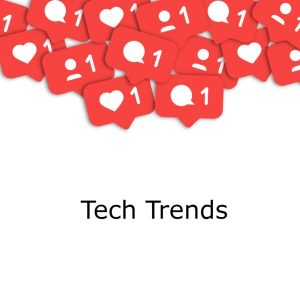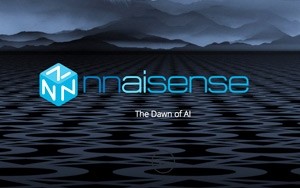What’s your favorite tool for analyzing employee engagement?
1. TINYpulse
 We’ve been using TINYpulse for nearly two years. They automatically send an anonymous one-question survey to your employees every week to help you keep a “pulse” on engagement. The questions range from, “How happy do you feel at work?” to “What would you do differently if you were CEO?” Last year, we were TINYpulse’s happiest company in the education industry! – Bhavin Parikh, Magoosh Inc
We’ve been using TINYpulse for nearly two years. They automatically send an anonymous one-question survey to your employees every week to help you keep a “pulse” on engagement. The questions range from, “How happy do you feel at work?” to “What would you do differently if you were CEO?” Last year, we were TINYpulse’s happiest company in the education industry! – Bhavin Parikh, Magoosh Inc
2. CultureAmp
 I love CultureAmp. The platform provides deep analytics and a great platform to share information about what’s going on in your organization. They provide in-depth engagement scores, sentiment arcs and a predictive heat map analysis. I also love a good process for provoking the dialogue once the data is collected. That delivers the “so what” behind the number. – Aj Thomas, Infuse Entrepreneurship
I love CultureAmp. The platform provides deep analytics and a great platform to share information about what’s going on in your organization. They provide in-depth engagement scores, sentiment arcs and a predictive heat map analysis. I also love a good process for provoking the dialogue once the data is collected. That delivers the “so what” behind the number. – Aj Thomas, Infuse Entrepreneurship
3. 15Five
 I’ve been using 15Five since beta and it’s awesome. Every week employees answer a targeted group of questions. You can use pre-existing ones that 15Five has on file, create your own or use a combination. I can tell from the thoughtfulness and quality of the answers how engaged or disengaged any of my employees are at the time. It’s highly recommended. – Andrea Lake, StickerJunkie.com
I’ve been using 15Five since beta and it’s awesome. Every week employees answer a targeted group of questions. You can use pre-existing ones that 15Five has on file, create your own or use a combination. I can tell from the thoughtfulness and quality of the answers how engaged or disengaged any of my employees are at the time. It’s highly recommended. – Andrea Lake, StickerJunkie.com
4. Vocoli
 By using a platform like Vocoli, you indirectly track employee engagement through the volume and quality of ideas and suggestions submitted. Vocoli powers innovation management, so when employees are actively sharing — and championing — thoughtful ideas that can create change within your company, you can measure how impactful your workforce is on your business’ long-term success. – Danny Wong, Grapevine
By using a platform like Vocoli, you indirectly track employee engagement through the volume and quality of ideas and suggestions submitted. Vocoli powers innovation management, so when employees are actively sharing — and championing — thoughtful ideas that can create change within your company, you can measure how impactful your workforce is on your business’ long-term success. – Danny Wong, Grapevine
5. Net Promoter Score
 While most often used to measure customer happiness, Net Promoter Score (NPS) can also be an excellent way to take the pulse on employee engagement. Once a quarter we send out a simple NPS survey to our employees through Delighted.com. This provides an excellent window into how our teammates are feeling and provides actionable insight on how to improve going forward. – Joel Holland, VideoBlocks
While most often used to measure customer happiness, Net Promoter Score (NPS) can also be an excellent way to take the pulse on employee engagement. Once a quarter we send out a simple NPS survey to our employees through Delighted.com. This provides an excellent window into how our teammates are feeling and provides actionable insight on how to improve going forward. – Joel Holland, VideoBlocks
6. Podio
 Through Podio, you can view activity of each employee, deliverables and projects they were involved in and much more. We use Podio for time tracking as well, and are able to quickly and easily create reports based on employees to determine productivity and participation. In addition, the social media elements within Podio allows us to track engagement, conversations, comments and more. – Marcela DeVivo, Gryffin Media
Through Podio, you can view activity of each employee, deliverables and projects they were involved in and much more. We use Podio for time tracking as well, and are able to quickly and easily create reports based on employees to determine productivity and participation. In addition, the social media elements within Podio allows us to track engagement, conversations, comments and more. – Marcela DeVivo, Gryffin Media
7. Employee Surveys
 We conduct employee surveys twice a year and emphasize that the answers remain anonymous. This elicits honesty from our team and provides great analysis. – Simon Casuto, eLearning Mind
We conduct employee surveys twice a year and emphasize that the answers remain anonymous. This elicits honesty from our team and provides great analysis. – Simon Casuto, eLearning Mind
8. Slack
 It is not necessarily used for analyzing engagement, but an excellent tool to maintain a consistent, positive pulse on company culture — both when we’re in the office and when we’re remote. We’ve forgone entirely using email as a form of internal communication and have replaced it with Slack, which allows us to create groups and channels for specific topics/projects and communicate in real time. – Matt Cheuvront, Proof Branding
It is not necessarily used for analyzing engagement, but an excellent tool to maintain a consistent, positive pulse on company culture — both when we’re in the office and when we’re remote. We’ve forgone entirely using email as a form of internal communication and have replaced it with Slack, which allows us to create groups and channels for specific topics/projects and communicate in real time. – Matt Cheuvront, Proof Branding
9. iDoneThis
 I love iDoneThis because it is short and provides impact. It takes the team five minutes to fill it out each day and it sends a digest so everyone can see what others are doing. Since many of our team members are spread across the country and one person is international, it helps create more of an office environment. – Raoul Davis, Ascendant Group
I love iDoneThis because it is short and provides impact. It takes the team five minutes to fill it out each day and it sends a digest so everyone can see what others are doing. Since many of our team members are spread across the country and one person is international, it helps create more of an office environment. – Raoul Davis, Ascendant Group
10. Hppy
 One of the most interesting things that Hppy measures is employees’ moods. Not only does the app allow you see how your employees are affected by the work they do, but you also have the opportunity to receive anonymous feedback on anything from work environment to the way you celebrate birthdays in the office. This app really opened new avenues of communication for me and my team. – Firas Kittaneh, AstraBeds
One of the most interesting things that Hppy measures is employees’ moods. Not only does the app allow you see how your employees are affected by the work they do, but you also have the opportunity to receive anonymous feedback on anything from work environment to the way you celebrate birthdays in the office. This app really opened new avenues of communication for me and my team. – Firas Kittaneh, AstraBeds
11. Salesforce
 All of my employees use Salesforce for all of their daily activities. It is so easy to track what people are doing on a daily/weekly/monthly basis. It becomes apparent when an employee is distracted and not as engaged when their Salesforce activity is lower than average. Once this happens, I make a point to have a conversation with the employee to find out what’s going on and how I can help. – Jayna Cooke, EVENTup
All of my employees use Salesforce for all of their daily activities. It is so easy to track what people are doing on a daily/weekly/monthly basis. It becomes apparent when an employee is distracted and not as engaged when their Salesforce activity is lower than average. Once this happens, I make a point to have a conversation with the employee to find out what’s going on and how I can help. – Jayna Cooke, EVENTup
(317)
Report Post




